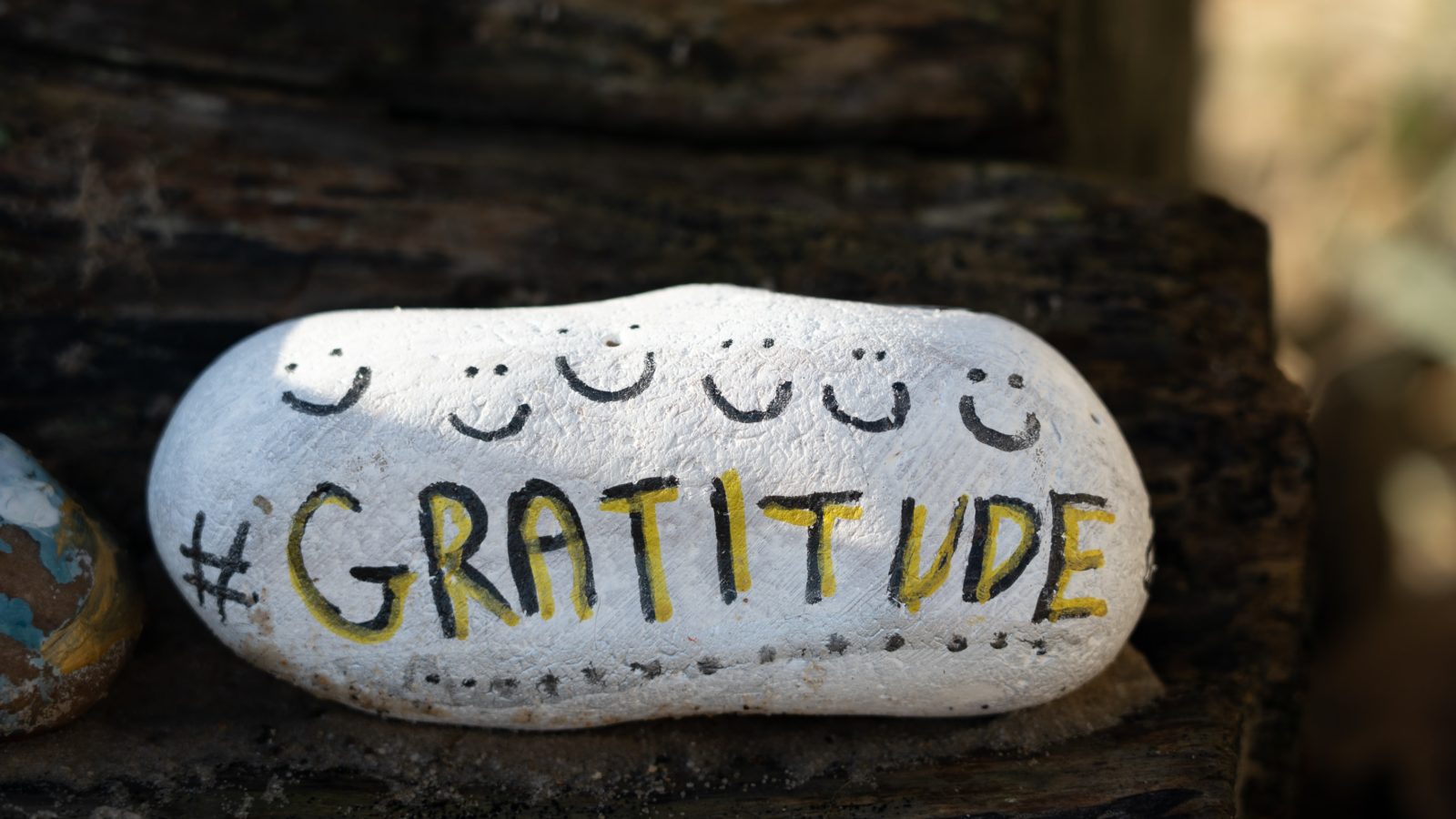The holiday season is one of the rare times of year when many of us actually reflect on what we’re grateful for. But why not use the holiday season to start a new habit and practice gratitude daily?
The health benefits of practicing gratitude are absolutely staggering!
Robert Emmons, professor of psychology at the University of California, Davis, is considered one of the world’s leading experts on gratitude. He’s the author of over two hundred peer-reviewed journal publications and has published three books on the topic of gratitude. It seems Dr. Emmons is just about as good a source as we can hope for when it comes to figuring out how gratitude can save the day.
So, let’s see what Dr. Emmons has to say about gratitude. Through his work, Dr. Emmons argues there are two crucial elements that define gratitude:
- An affirmation of goodness. We affirm there are good things in the world, gifts and benefits we’ve received.
- A recognition the sources of this goodness are outside of ourselves. We acknowledge other people—or even higher powers, if you’re of a spiritual mindset—gave us many gifts, big and small, to help us achieve the goodness in our lives (Greater Good Magazine, 2021).
We all have countless things to be grateful for, but our tendency is to focus on the things others have that we want rather than everything we already have.
But what if we took the time to truly appreciate the things we have by practicing gratitude?
It turns out the research shows there are massive positive consequences to practicing gratitude. Even simple actions like sharing our gratitude with others or simply writing down the things we are grateful for can have great effects on our wellbeing. In 2020, Robert Emmons shared expressing gratitude allows us to:
- Celebrate the present
- Block toxic emotions like envy, resentment, regret, and depression
- Become more stress-resilient
- Strengthen our social ties and feelings of self-worth
Bullet point number two directly addresses the negative consequences of comparing ourselves to others. Isn’t it nice when things work out like that?
Perhaps even more importantly from Dr. Emmons’ work is the fact that by regularly practicing gratitude, we become more stress-resilient. As we learned in Chapter 7 of Redefining Success from Bruce Feiler’s work, we can expect to experience disruptive life events every twelve to eighteen months. By regularly practicing gratitude, we can be better equipped to handle the stress those disruptors cause us.
Additionally, Laurie Santos, Yale positive psychologist, shared the following about the effect gratitude has on our happiness during her 2020 interview on Clear+Vivid with Alan Alda: “Gratitude is another thing we know is super correlated with feeling happy. Happy people are counting their blessings. They’re focused on the things that make them happy and they’re really thankful for.
“But more importantly, they express it. They spontaneously express their gratitude to the people around them. And when you think about it, there’s a lot of people in our life we’re grateful for, but we often don’t say it.
“And if you ask, ‘Why don’t you say it?’, it’s because it would feel weird. We predict awkwardness but actually, in practice, it feels really good, both for the person who’s hearing the gratitude and for the person who’s expressing it.”
As I went through my own personal journey, I can tell you the power of gratitude is absolutely astounding. From my own firsthand experience of incorporating gratitude exercises and mindsets in my life, I can tell you the simple practice of focusing on the positive things you have has a profound way of reframing the events and circumstances of your own life.
Daily Gratitude Exercises:
1) Select a time each day to start a new gratitude routine. Every day, at your selected time, answer the following question: what are you thankful for today?
- I would recommend you set a daily reminder in your calendar for the same time so you can get into the habit. Alternatively, add a sticky note to your bathroom mirror so you answer the question while you are getting ready to start or end your day.
2) Keep a Good News Box or Gratitude Journal: My wife and I started a Good News Box in 2017 and haven’t stopped. The below instructions can also be implemented with a gratitude journal instead.
- Instructions: Designate a container (we used a box, but any container will do) and label it with “Good News.” Keep the Good News Box in a prominent location in your home (kitchen or living room). Keep scratch paper and a writing utensil next to the box at all times. Anytime something good happens in your life, take a moment to write it down on a piece of paper and place it in the Good News Box. Alternatively, dedicate a specific time each week to reflect on all of the good things from the week and add any good news from the week to the box. Aim to add a minimum of five pieces of paper to the box each week.
- At the end of every month, take time to open the box and read all of the pieces of paper you added for the month. Do not throw the pieces of paper away, but simply store them for the time being. This way, at the end of the year, you can review all of the good news from the entire year!
3) Send Notes/Letters of Gratitude
- Every week, send thank-you notes to three people in your life. These individuals can be friends, family, colleagues, or peers. The messages can be as short or long as you want, but be sure to express how grateful you are to have these people in your life and what specific impact they have had on you that you are thankful for.


